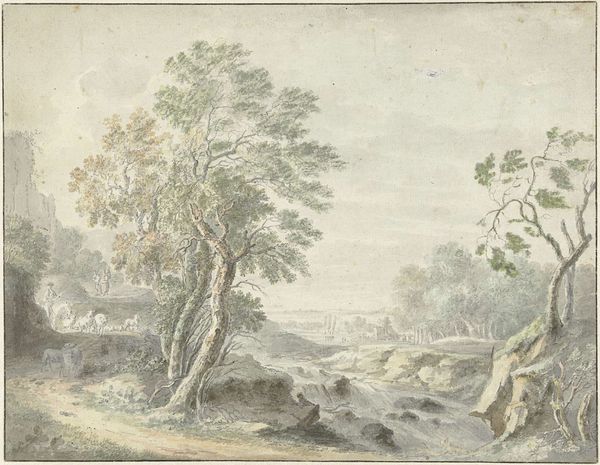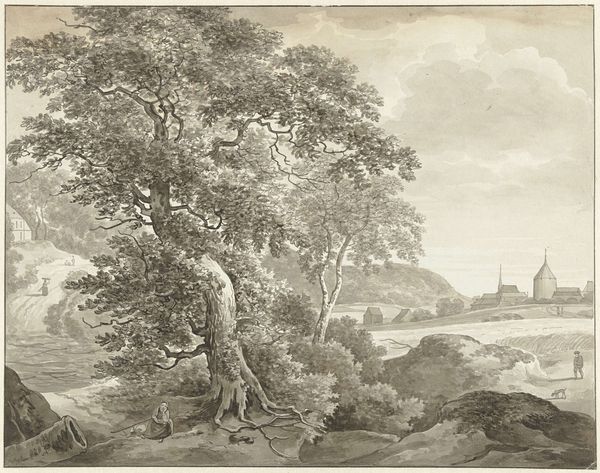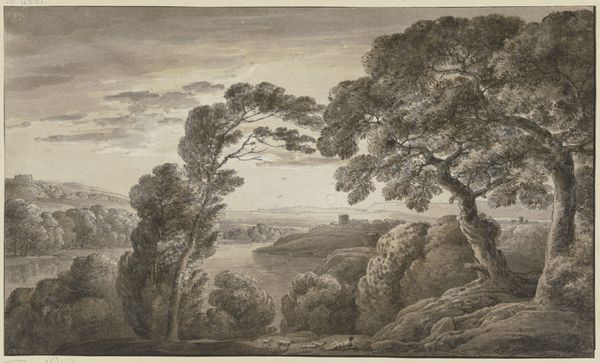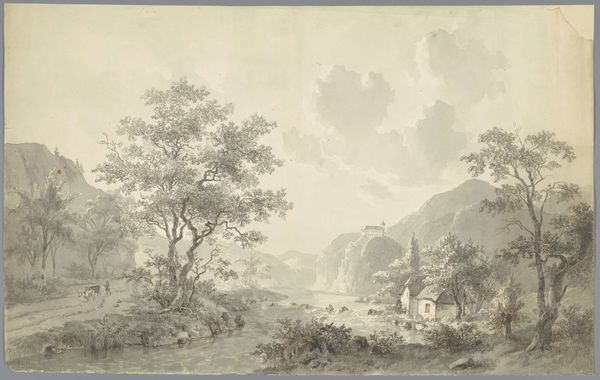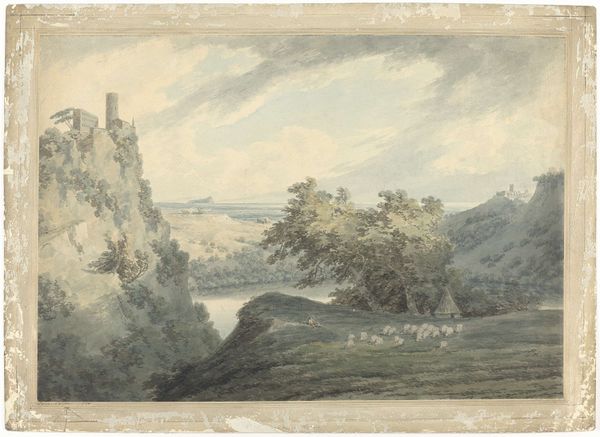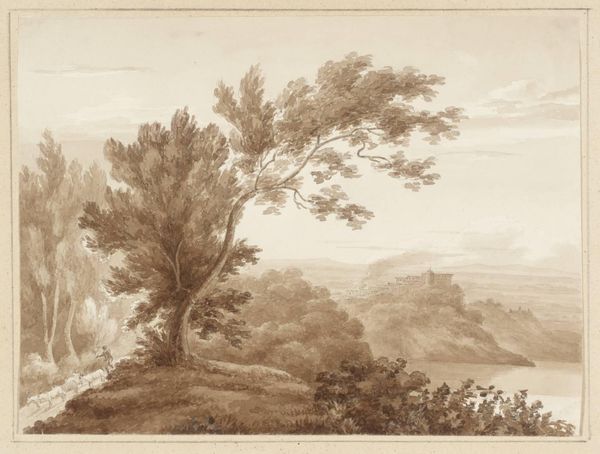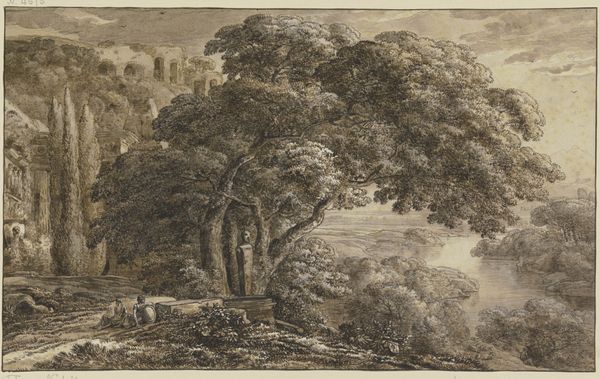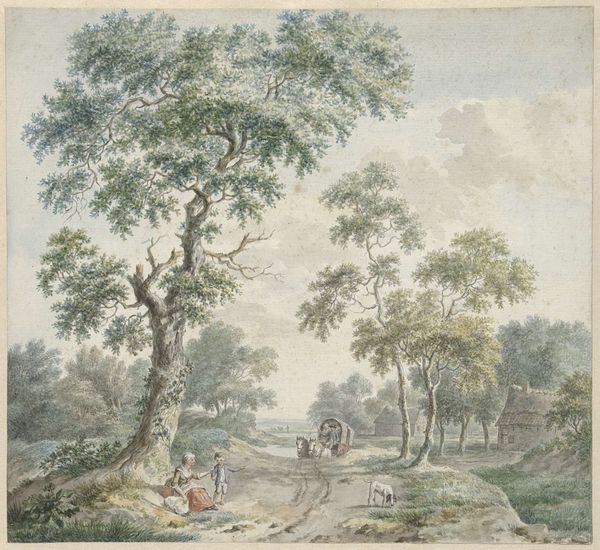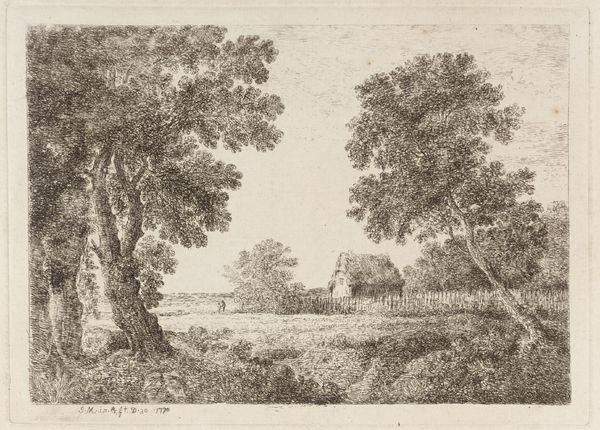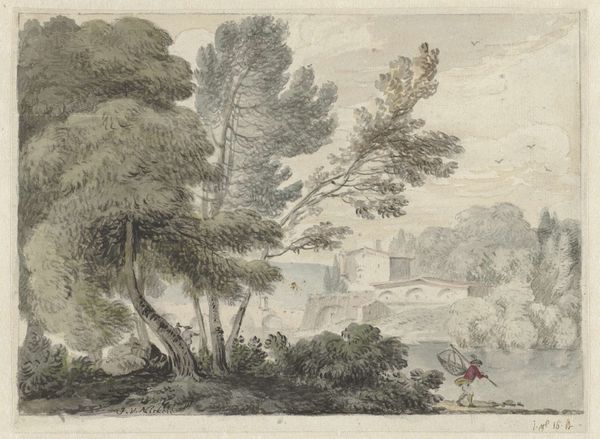
Dimensions: sheet: 29 × 41.1 cm (11 7/16 × 16 3/16 in.) mount: 37.8 × 50 cm (14 7/8 × 19 11/16 in.)
Copyright: National Gallery of Art: CC0 1.0
Curator: I’m immediately drawn into the stillness of this landscape; the gentle washes of color evoke a serene atmosphere. It’s as if time slows down, doesn’t it? Editor: Indeed. We’re looking at "A Castle on the Dart," a watercolor and pencil drawing made in the late 18th century by Paul Sandby. Sandby was a key figure in the development of watercolor as a legitimate artistic medium in Britain, especially in relation to the picturesque movement. Curator: Oh, picturesque, definitely! It's that constructed, idealized version of nature. The tree looming in the foreground – twisted and majestic – feels very intentional, like a carefully placed actor on a stage. Editor: Absolutely. Sandby was known for sketching en plein air, but then developing these sketches into finished works back in the studio. The viewpoint, slightly elevated and framed by that prominent tree, certainly invites us into this carefully arranged composition. How does it sit with you? Curator: Well, there's a palpable sense of wistfulness for something, maybe a past that never fully existed. The castle in the distance, rendered so delicately, seems less like a fortification and more like a dreamy apparition. You know? It lacks solidity almost. Editor: The presence of that distant architectural element speaks to a larger trend of landscape representation and social meaning. The castles represented within images gained significance to the extent that they are integrated within notions of nationalism, property and history. The image serves as an interesting reminder of these links and of Sandby’s investment in the changing British landscape. Curator: Interesting, so he’s not just painting pretty scenes; he’s also subtly participating in shaping a national identity through his art? That resonates; this vista and building is just an element of a larger system of thinking. I can’t say I knew that. It does makes it far more profound and moving. The pale colours initially suggested something decorative but it is, indeed, so much more… Editor: Exactly, he is reflecting and shaping the British consciousness. So, we initially discussed composition; looking closer, it is also remarkable just how economic is use of watercolor is. Just a very few layered colours, isn’t it? Curator: Right! It's so economical with its detail; allowing our own imaginations to fill in the blanks. A quiet piece then with monumental importance. Editor: Yes, exactly. A wonderful intersection of aesthetics and historical discourse—it has made me reconsider how British society constructs images. Thank you!
Comments
No comments
Be the first to comment and join the conversation on the ultimate creative platform.
